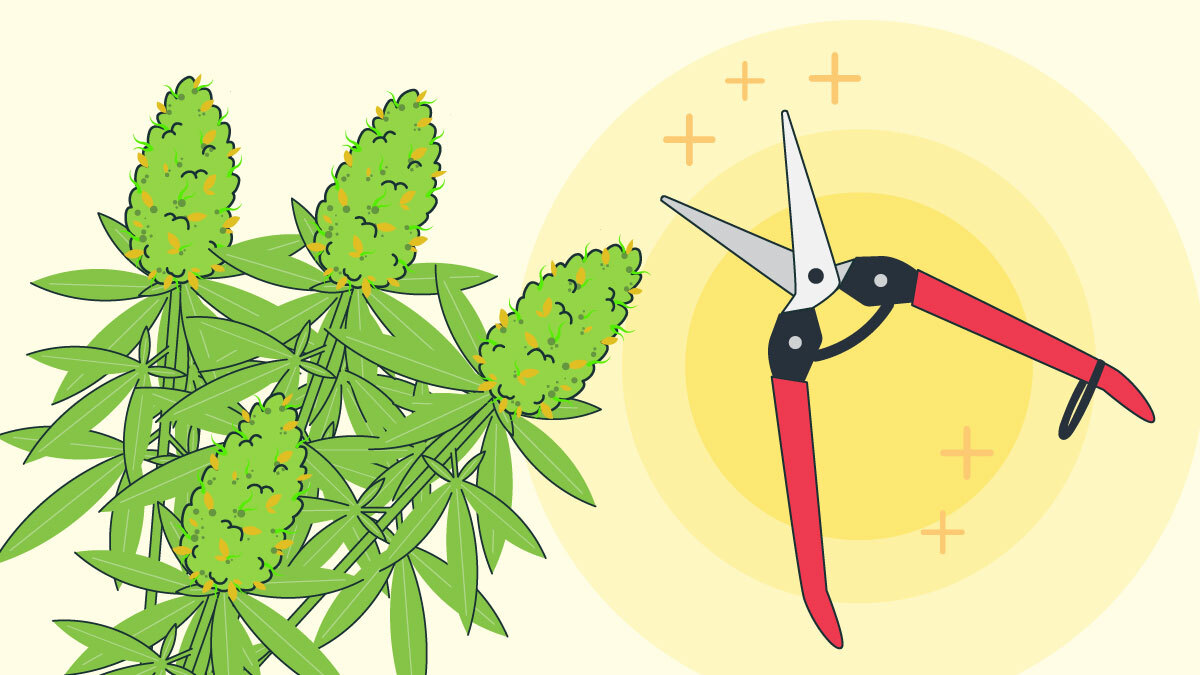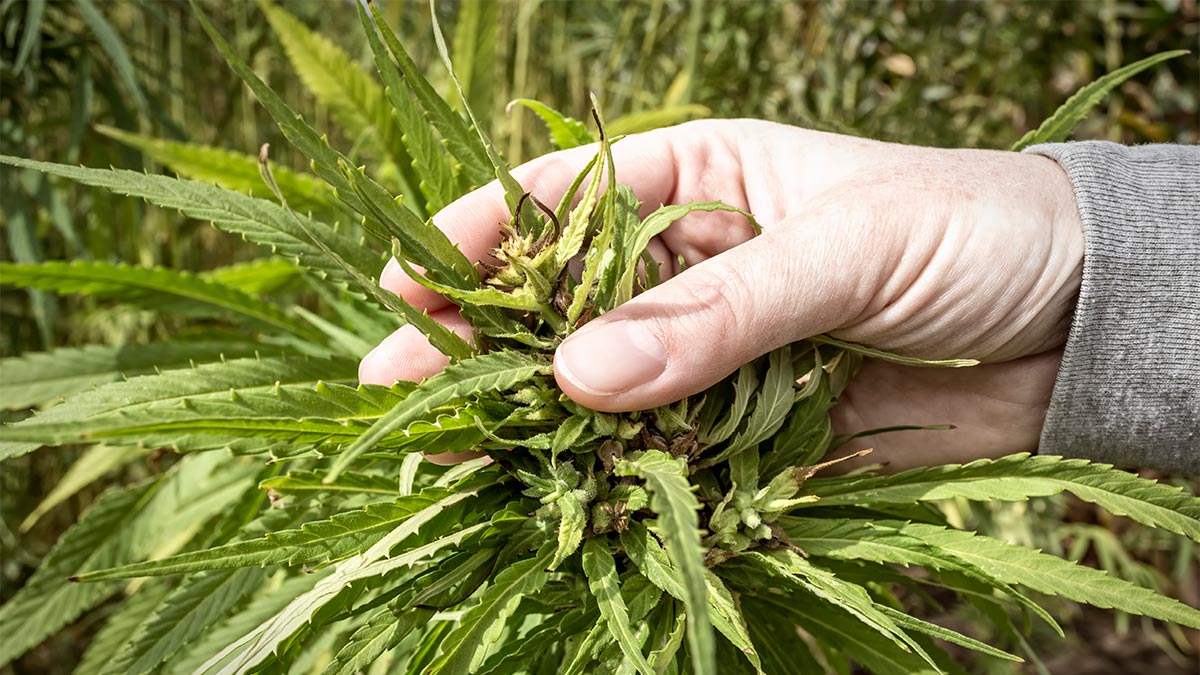When To Harvest Marijuana Plants?

Parents have to be saints to put up with their kids’ plaintive cries from the back seat: “Are we there yet? Are we there yet?”
They can’t help it. They’re kids.
They also can’t help it because they’re human. Let’s be honest; we often get just as impatient as they do.
Example A: the questions that overwhelm us as soon as we plant something in the ground or in a pot. “When will it sprout?” “Where are the flowers?” “When can I harvest it?”
“Are we there yet?”
That impatience is particularly noticeable when you plant a cannabis crop, even if it’s really just one plant. After all, you can smell it. You can almost taste it. And you can just imagine how amazing the experience is going to be when you smoke it.
But growing weed isn’t the same as growing tomatoes or peppers. You can watch tomatoes or peppers grow larger and larger, turn color – and finally look like they’re ready for the kitchen or dining room table.
Cannabis plants, on the other hand, don’t produce fruit that almost begs you to be picked. The growth and maturity of marijuana buds can be virtually impossible to read, making it difficult to know when to harvest the flower that’s been growing for months.
Let’s make the puzzle easier to solve.
The Growth Of A Weed Plant
When you start cannabis seeds, it will usually take anywhere from 10 to 28 weeks (occasionally fewer or even more) until they’re ready for harvest.
As they grow, the plants go through four distinct stages.
- Germination: The seeds sprout, grow several tiny leaves, and then begin to grow their distinctive fan leaves. This is when they should be moved to a pot. Average length: 3-10 days.
- Seedling: More fan leaves emerge, with an increasing number of blades on each leaf. When the newest leaves all have between five and seven blades, the seedling will begin to grow much faster and can be transplanted into a larger pot. Average length: 2-3 weeks.
- Vegetative: This is the plant’s major growth stage. It grows much taller and bushes out (sativa strains grow tallest, indica strains grow wider and bushier), stalks and stems become thicker, and fan leaves proliferate. Average length: 3-14 weeks.
- Flowering: Pre-flowers (pistils) and then buds develop, the buds grow larger, and sticky trichomes finally appear and proliferate. Average length: 5-10 weeks.
Once the buds appear, the temptation to harvest and enjoy your weed can be overwhelming. Don’t give in. It isn’t until late in the flowering stage that the product is truly ready to harvest and enjoy.
Here’s what to look for.
Harvesting Season
Outdoor plants take their cues from the sunlight they receive, so it’s relatively easy to predict approximately when they’ll be ready for harvest.
In northern climates, plants are done growing sometime between the end of August and the beginning-to-middle of October, depending on their strain. In more temperate climates in southern and western states, the season may extend into the beginning or even the middle of November.
For indoor plants, it’s a very different story. Growers can control the amount of light their plants receive, and can actually force their plants to move from the vegetative stage to the flowering stage. And strains with a shorter growing period, like OG Kush and Early Girl, are able to ignore the outside conditions to finish maturing more rapidly.
Needless to say, you can collect your plants’ buds whenever you’d like. But waiting until they “tell you” that they’ve finished producing their dank weed will be the best payoff for all of your patience.
How To Know When Marijuana Is Ready To Harvest

There are two important signals that a weed plant has finished its important work, and is ready for you to enjoy it. You’ll see one of those signals from the plant’s pistils, and the other from its trichomes. There are also secondary signs that it’s almost time to harvest your flower.
Pistils
These are the hair-like pre-flowers of the marijuana plant, which are white when they first appear at the start of the flowering stage. They don’t stay white throughout the plant’s life, though.
Eventually, the pistils will begin to curl and will turn orange and then brown. That’s the signal you’re looking for – unless you have auto-flowering plants (more about those shortly).
When one-half to three-quarters of the pistils are curled up and brown, that’s the point at which your buds will be at the height of their potency. You should harvest them to get the strongest-possible weed. If you wait until almost all of the pistils have turned brown, your pot is likely to contain less THC and more CBD, and it may take on a somewhat-unpleasant taste.
Trichomes
Checking the plant’s trichomes is the more accurate way of determining when to harvest, but it’s more difficult. You’ll need a magnifying glass, jeweler’s loupe, or electronic microscope to do it properly.
As you undoubtedly know, trichomes are the sticky, resinous glands that develop throughout the buds of a cannabis plant. They also change color during the flowering period from clear, to white, to bright amber. Clear trichomes indicate that it’s not time to harvest just yet. Wait until half of them are amber, and the other half are white. That signals the height of the weed’s potency.
Other Signs To Watch For
There are other natural changes that take place as a cannabis plant matures.
- Leaves: The plant’s nitrogen levels begin to fall as it nears the end of its growth period, which means the leaves will turn from vibrant green to yellow. The plant also takes in less water, which can cause some of its leaves to dry out and curl up.
- Bud Shape: The buds on the plant begin to tighten up as it nears maturity. When they’re tight and firm, it’s close to the time you’ll want to collect, dry, cure, and enjoy them.
When To Harvest Autoflowering Plants
Autoflowering plants are terrific for indoor growers who want to be able to harvest more quickly and grow more crops each year. Since these plants grow “on their own schedule” instead of depending on cues from sunlight, they don’t act in exactly the same way as more common photoperiod cannabis plants.
Here’s what we mean. Autoflowering strains may not be ready for harvest when half (or even more than half) of their pistils have turned brown, and the color of their trichomes may change more slowly than those on photoperiod plants.
Instead, depend primarily on what their fan leaves look like. When the larger leaves begin to fall off of the plant, that’s the best sign that your auto-flowering weed is just begging to be harvested and enjoyed.
When To Harvest Marijuana? FAQ
Q: What happens if you harvest too early?
A: You can still smoke the weed, but it won’t be as potent as it would have been if you’d waited. The flavor and aroma won’t be ideal, either.
Q: What happens if you harvest too late?
A: You’ll end up with weed that will have lost a good deal of its potency since the THC turns into CBD fairly quickly. The trichomes may also become brittle or fall off of the buds, which means you’ve spent months growing pot that’s essentially useless.
Q: What do you do with the plants when they’re ready for harvest?
A: You’ll have to trim them, dry them for a week or so, and then cure the flower so its potency and other characteristics are maximized without damage. If your mouth started watering when the pistils started turning brown and the trichomes began to turn orange, stay patient. The extra time you’ll spend on drying and curing your harvest will be well worth the investment.